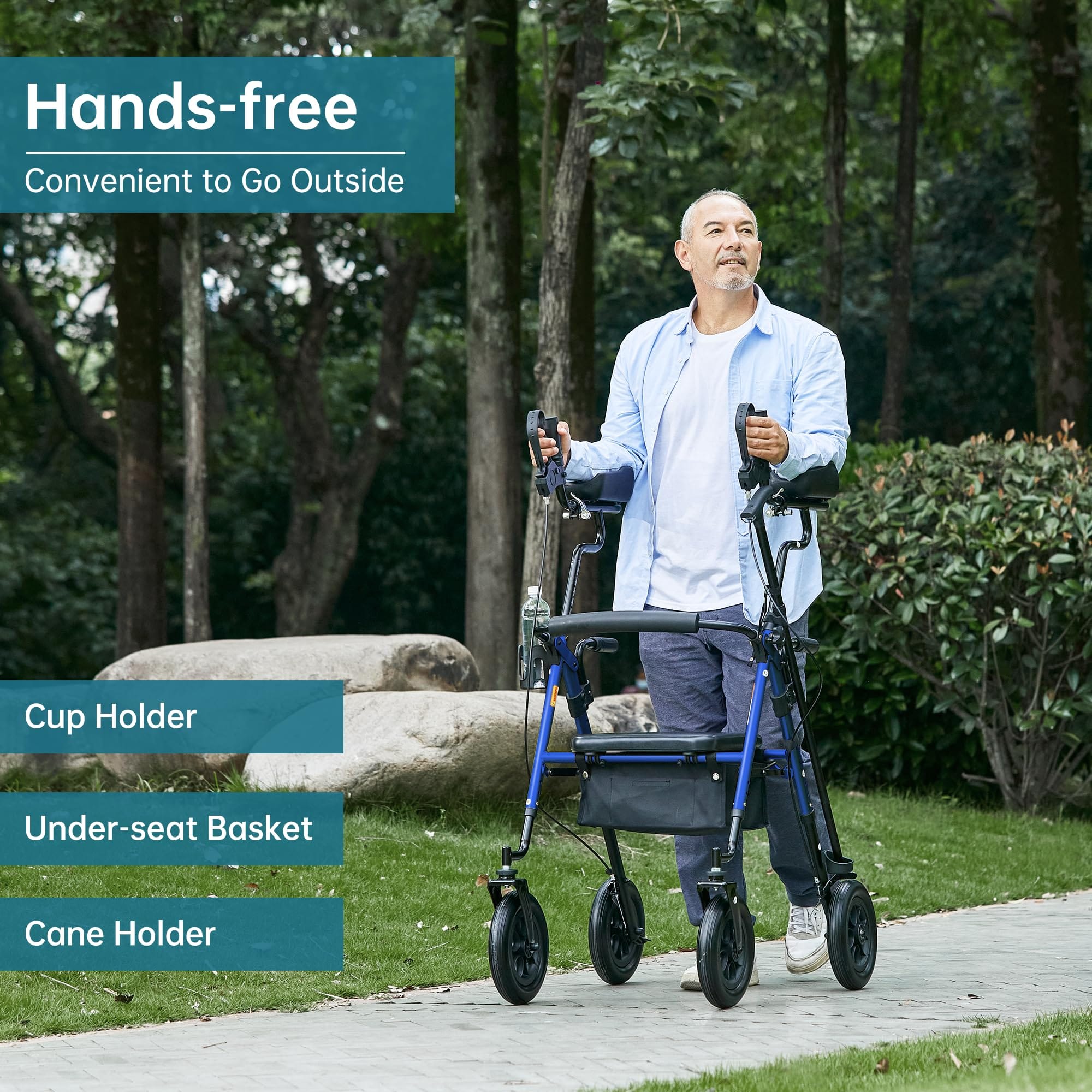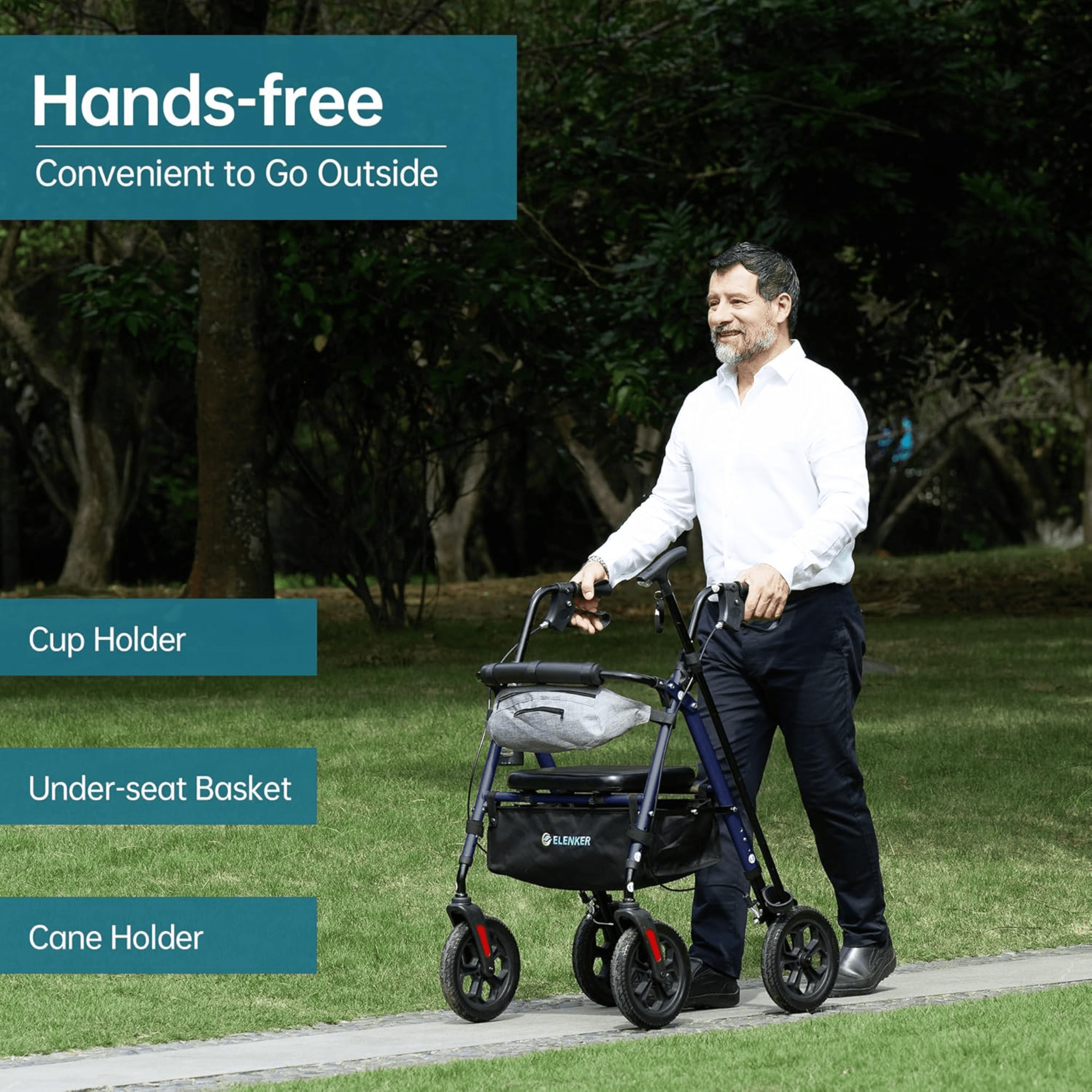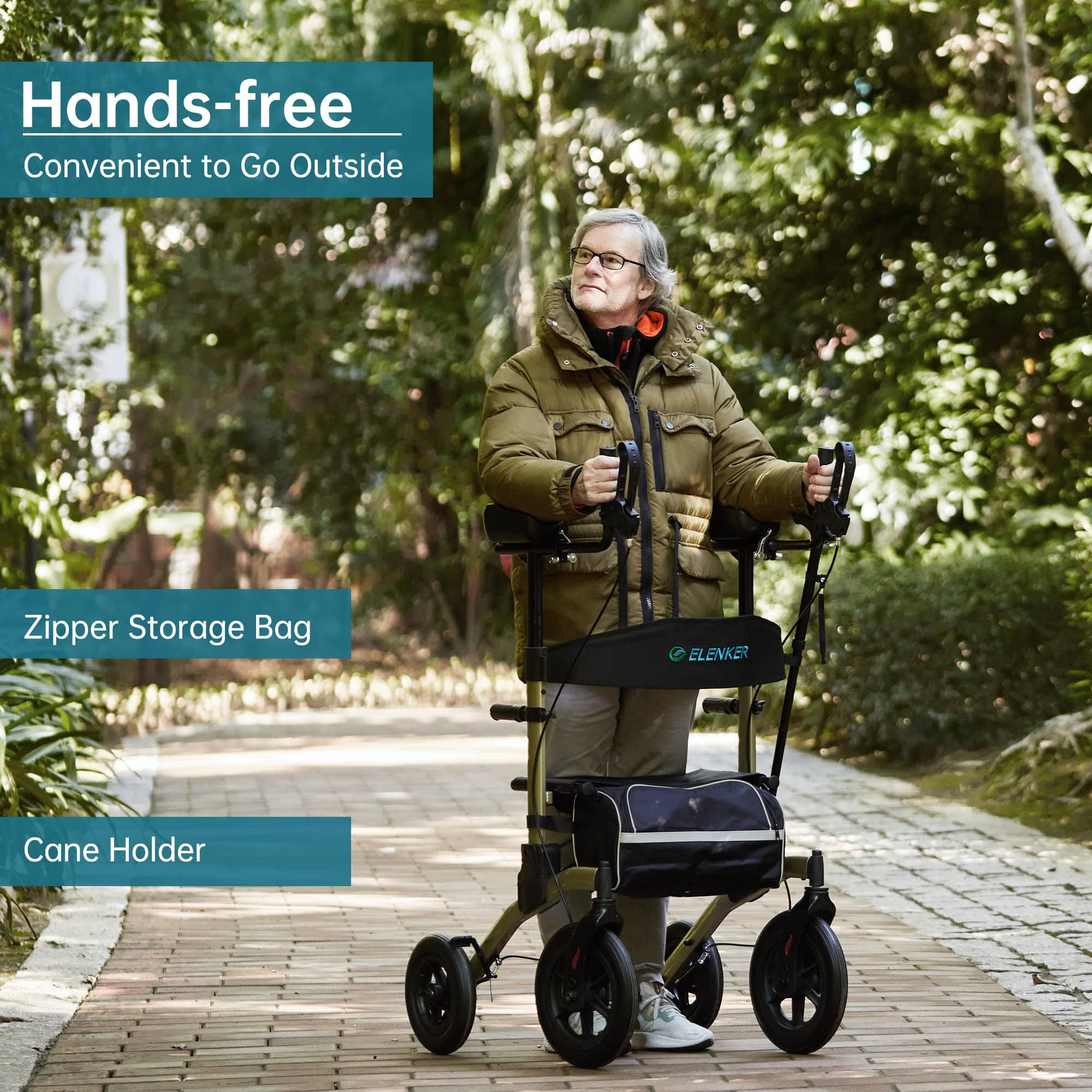If you’ve ever used a traditional walker and felt your wrists screaming halfway through the day, you’re not alone. A lot of people—especially older adults or those recovering from surgery—find that pushing down on standard walker handles puts a lot of stress on their wrists and lower arms. So it’s no surprise that stand-up walkers (also known as upright walkers) are getting more attention.
But do they actually help reduce wrist pressure? Short answer: yes, for most people. Let’s dig into why that is, how they work and whether they might be a good option for you or someone you care about.

How Regular Walkers Strain the Wrists
Traditional walkers are built so that your hands grip the handles at about hip height. That means you’re leaning forward slightly, putting downward pressure through your hands and wrists every time you walk. Over time, this can:
Cause soreness in the wrists
Aggravate arthritis
Lead to bad posture
Make you feel more tired than you should
If your upper body isn’t super strong, or if your wrists are already a little sensitive, this setup can be a real pain—literally.
What Makes Stand-Up Walkers Different
Stand-up walkers are designed to shift your body position. Instead of leaning down and forward, you’re standing more upright with your elbows supported by padded forearm rests or tall handles. That change in posture makes a big difference.
Here’s what happens with a stand-up walker:
Your weight is distributed more evenly across your forearms and shoulders
Your wrists aren’t bearing the full load
You walk more naturally and comfortably
You feel less hunched and more balanced
It’s kind of like the difference between pushing a grocery cart and leaning on a cane. The cart keeps you more upright and spreads out the effort.

Who Might Feel the Most Relief
Stand-up walkers can be especially helpful if:
- You’ve got arthritis in your wrists or hands
- You’re dealing with carpal tunnel syndrome
- Your upper body strength is limited
- You feel discomfort with a regular walker
- You need more postural support in general
That said, it’s not only about wrist pain. A lot of users report that their shoulders and neck feel better too, just from walking more upright.

But Are Stand-Up Walkers for Everyone?
Not necessarily. While they’re great for wrist relief, there are a couple of things to think about:
- They’re taller and bulkier, which might make them a tight fit indoors
- They can take some getting used to—especially steering with forearms
- Some models are heavier than regular walkers
- If you have shoulder issues, supporting weight there might also be tricky
So, if wrist pain is your main issue, a stand-up walker could be a big improvement. But if your shoulders are already sensitive, it’s a good idea to try one out first—maybe at a medical supply store or physical therapy center.
Tips for Choosing the Right One
If you’re shopping around, here’s what to look for in a stand-up walker that’s easy on the wrists:
✅ Adjustable Forearm Supports
Everyone’s arm length is different. Make sure the forearm pads or handles can be raised or lowered so you’re not straining.
✅ Comfortable Grip
Soft, padded handles or forearm rests reduce friction and pressure. Some even have angled grips for better alignment.
✅ Lightweight Frame
Especially if you’re planning to take it in and out of a car, weight matters. Aluminum frames tend to be sturdy but not too heavy.
✅ Easy Brakes
You don’t want to fight with hand brakes. Choose a model with smooth, easy-to-pull brakes—preferably ones that lock for extra safety.
Listen to Your Body
If your current walker is making your wrists ache by midday, that’s a signal something’s not right. Switching to a stand-up walker could take the pressure off and make walking feel easier again. It’s not just about getting from point A to point B—it’s about doing it without hurting yourself in the process.
Every person’s needs are a little different, so if you’re not sure which walker works best for you, talk to your doctor or physical therapist. But if wrist strain is the main problem, a stand-up walker is definitely worth considering.




